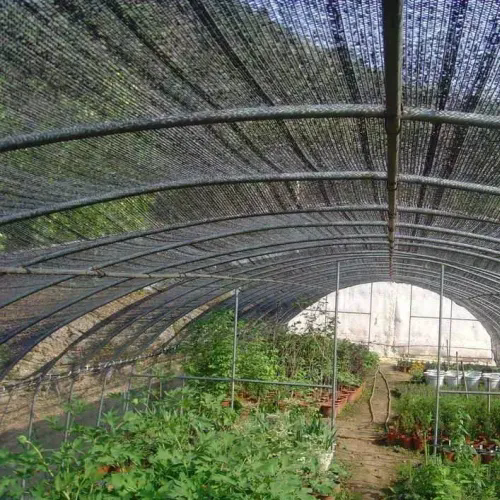Sun Shade Nets for Plants: Your Essential Q&A Guide
2024-10-22
Sun shade nets play a vital role in protecting plants from excessive sunlight, heat, and harsh weather conditions. In this FAQ-style blog, we’ll explore what sun shade nets are, their benefits, types, and how to use them effectively in your gardening endeavors.
1. What is a Sun Shade Net?
A sun shade net is a type of fabric made from woven or knitted materials designed to block a certain percentage of sunlight while allowing air and moisture to pass through. These nets are commonly used in gardens, nurseries, and agricultural fields to protect plants from excessive sun exposure.
2. Why do I need a Sun Shade Net for my plants?
Sun shade nets offer several benefits for plant health and growth:
Protection from UV Rays: They shield plants from harmful ultraviolet (UV) rays, reducing the risk of sunburn and leaf scorch.
Temperature Regulation: Shade nets help lower temperatures around plants, preventing heat stress and promoting healthy growth.
Reduced Water Loss: By minimizing direct sunlight, they help retain moisture in the soil, reducing the need for frequent watering.
Pest Control: Some shade nets can also deter certain pests, providing an additional layer of protection.
3. What are the different types of Sun Shade Nets?
Sun shade nets come in various types, each designed for specific applications:
Shade Cloth: Typically made of woven fabric, it comes in different densities (e.g., 30%, 50%, 70% shading) to provide varying levels of sunlight reduction.
Knitted Shade Nets: These nets are lightweight and allow for good airflow while blocking sunlight. They are ideal for nurseries and greenhouses.
Aluminet: A reflective shade material that not only blocks sunlight but also reflects heat, making it effective for high-temperature areas.
Anti-UV Nets: Designed with UV-resistant materials, these nets offer long-term protection against sun damage.
4. How do I choose the right Sun Shade Net for my plants?
Choosing the right sun shade net depends on several factors:
1. Light Requirements of Your Plants: Determine the light needs of your plants. Some plants thrive in full sun, while others prefer partial shade.
2. Shade Density: Select a net with an appropriate shade percentage (e.g., 30% for partial shade, 50-70% for plants that need more protection).
3. Size and Coverage: Measure the area you want to cover to ensure you purchase the correct size of the net.
4. Material Quality: Look for durable materials that can withstand outdoor conditions, such as UV resistance and weather durability.
5. How do I install a Sun Shade Net?
Installing a sun shade net is relatively straightforward. Here’s how to do it:
1. Choose the Location: Determine where you want to install the net based on the sunlight exposure of your plants.
2. Measure and Cut: Measure the area to be covered and cut the net to size if necessary.
3. Select Mounting Options: Use poles, frames, or existing structures to secure the net. You can also use ropes or clips for easy installation.
4. Secure the Net: Attach the net tightly to prevent it from flapping in the wind. Ensure it is positioned at the right angle to provide adequate coverage for your plants.
5. Check Stability: After installation, regularly check that the net remains secure and adjust as needed.
6. How can I maintain my Sun Shade Net?
Proper maintenance will extend the life of your sun shade net:
Regular Inspections: Check for any tears, fraying, or damage, especially after storms or high winds.
Cleanliness: Remove any debris, such as leaves or dust, to prevent mold and mildew growth.
Storage: If the net is seasonal, store it in a cool, dry place when not in use to protect it from UV degradation.
7. Can Sun Shade Nets be used indoors?
Yes, sun shade nets can be used indoors, especially in situations where plants are exposed to intense sunlight through windows. They can help create a more controlled environment, reducing the risk of sunburn while still allowing adequate light and air circulation.
8. Are there any drawbacks to using Sun Shade Nets?
While sun shade nets are beneficial, there are some potential drawbacks to consider:
Limited Sunlight: Over-shading can inhibit plant growth, particularly for sun-loving species. It’s essential to choose the correct density based on your plants’ needs.
Installation Complexity: Depending on the setup, installation may require some effort, especially for larger areas.
Aesthetic Impact: Some gardeners may find that shade nets alter the look of their garden.
9. How do I know if my plants need a Sun Shade Net?
Signs that your plants may need a sun shade net include:
Leaf Scorching: If you notice brown, crispy edges on leaves, it may indicate sunburn.
Wilting: Excessive heat can lead to wilting even if the soil is adequately watered.
Stunted Growth: If your plants aren’t thriving despite adequate care, they may be suffering from too much sunlight.
10. Conclusion
Sun shade nets are invaluable tools for protecting your plants from harsh sunlight and heat. By understanding their types, benefits, and installation methods, you can enhance your gardening efforts and ensure the health and vitality of your plants. Whether you’re a novice gardener or an experienced horticulturist, sun shade nets can be an essential part of your plant care strategy.



